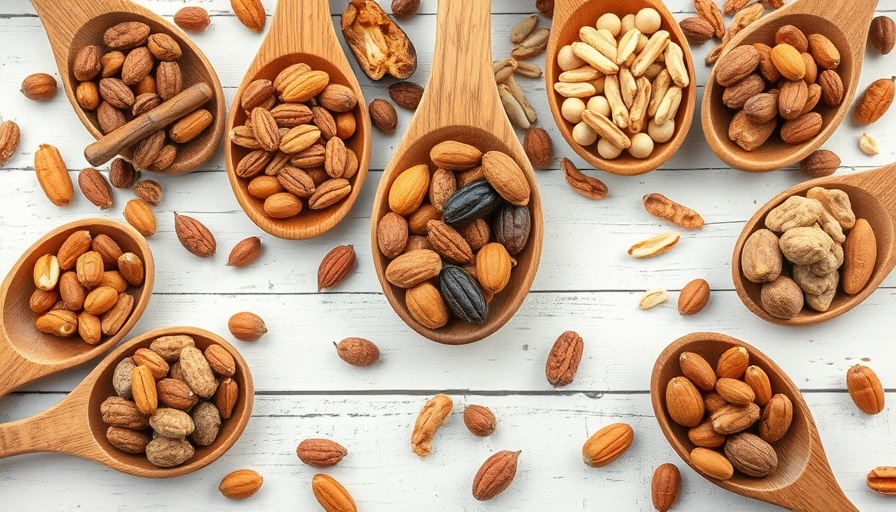
Understanding the Caloric Density of Nuts: What 100 Calories of Different Nuts Looks Like
When it comes to snacking, nuts often find themselves at the top of the healthy list. But as fitness enthusiasts, understanding how nuts fit into our diets is crucial. Nuts are delicious, nutritious, and packed with healthy fats, but their caloric density can vary wildly. This guide will help you visualize what 100 calories of different nuts looks like, so you can better manage your snack choices.
Exploring the Nutritional Value of Nuts
Nuts are more than just healthy snacks; they are a powerhouse of nutrition. For instance, almonds and walnuts offer a plethora of benefits with each handful. Almonds provide roughly 575 calories per 100 grams, whereas macadamia nuts can soar to 718 calories for the same amount. Understanding these values, as well as the content of proteins, fats, and fibers, aids in making informed dietary choices.
Seeing the Visual Difference: What 100 Calories Means
To appreciate how much you can eat for 100 calories, let’s explore some common nuts:
- Almonds: Approximately 14 almonds equates to about 100 calories.
- Pistachios: You can enjoy around 20 pistachios for 100 calories.
- Cashews: A handful, about 10 cashews, adds up to 100 calories.
Visualizing these counts enables you to portion your snacks while still enjoying the crunch and flavor you love.
The Health Benefits of Adding Nuts to Your Diet
Incorporating nuts into your snack repertoire isn't just about calorie counting; it’s also about health benefits. Nuts are rich in antioxidants, vitamins, and healthy fats that help in reducing inflammation and improving heart health. Almonds, for instance, are noted for their high vitamin E content, while walnuts are considered a great source of omega-3 fatty acids, promoting brain health.
Comparing Caloric Values: What's the Best Choice for You?
Knowing which nuts align with your health goals is vital. If you’re looking to keep your caloric intake lower, consider snacking on chestnuts, which have about 213 calories per 100 grams. On the other hand, if you seek higher protein content, peanuts and pistachios can offer you around 25-26% protein. The variance in nutritional content and caloric density among nuts makes them distinct and valuable for different dietary needs.
Addressing Common Misconceptions About Nuts
There's a pervasive myth that all nuts are high in calories and should be avoided, particularly for those trying to lose weight. However, many nuts, like chestnuts or pistachios, can fit into a balanced diet when consumed in moderation. Understanding the caloric contribution of various nuts allows you to enjoy the nutritional benefits without the guilt.
Practical Tips for Nut Consumption
Here are some suggestions for integrating nuts effectively into your diet:
- Portion Control: Use snack-sized bags to prevent overeating.
- Mix It Up: Combine different nuts to diversify nutrient intake.
- Mindful Snacking: Enjoy nuts as part of a larger meal or with fruits and vegetables to balance your snack.
Nut consumption should be part of an overall balanced diet. So next time you reach for that handful of nuts, remember to consider both the caloric content and the incredible health benefits they bring.
Conclusion: Make Nuts a Regular Feature in Your Diet
Nuts are undeniably a delicious and versatile snack, perfect for satisfying cravings and adding nutritional value. Armed with knowledge about caloric content and health benefits, you can confidently indulge in a variety of nuts as part of your fitness journey. So, grab a handful of your favorite nuts and enjoy the crunch!
 Add Row
Add Row  Add
Add 




Write A Comment